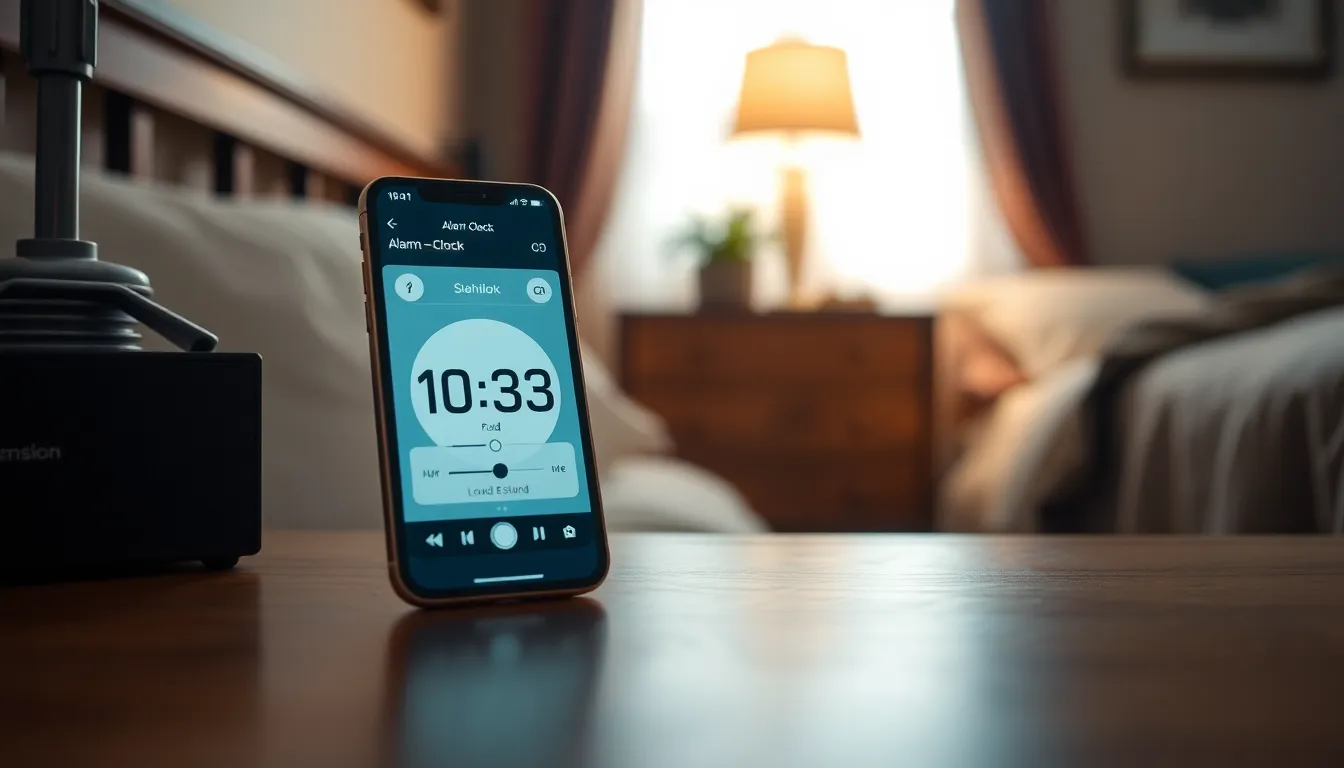Waking up to a gentle chirp or a soft melody might sound dreamy, but for many, it’s more like a lullaby to stay in bed. If the struggle to rise and shine feels like a daily battle, it’s time to turn that sleepy serenade into a wake-up call that could rattle the windows.
Table of Contents
ToggleUnderstanding Alarm Sounds
Alarm sounds play a crucial role in waking individuals up effectively. Choosing the right tones and maintaining appropriate volume helps ensure a successful wake-up experience.
Types of Alarm Tones
Different alarm tones serve various purposes. Some options include loud beeps that grab attention quickly, while others feature soothing melodies that may not be effective for everyone. Some people prefer natural sounds, like birds chirping, which can create a more pleasant morning atmosphere. Heart-pounding alarm options mix urgency with energy, making it difficult to ignore. Ultimately, experimenting with different sounds can help identify which tones lead to better mornings.
Importance of Alarm Volume
The volume of an alarm significantly affects its effectiveness. Higher volume levels can jolt a heavy sleeper awake, while a lower volume may let them drift back to sleep. Studies show that alarms in the range of 70 to 85 decibels typically provide the best results for waking people. Adjusting the volume according to personal sleep patterns can create a more tailored wake-up experience. It’s essential to find a balance between volume and comfort to ensure a successful start to the day.
Tips to Make Your Alarm Louder

Experimenting with various strategies can enhance alarm sound levels effectively.
Adjusting Alarm Settings
Adjusting settings on the alarm device can significantly increase volume. Most devices allow users to set maximum volume levels, which can make a noticeable difference. In addition, selecting an alarm tone known for its loudness, like a siren or an abrupt beep, captures attention swiftly. Consider enabling vibration settings, as this adds a physical sensation that complements auditory alerts. Additionally, place the alarm on a solid surface to amplify sound. Testing different sounds regularly ensures that they remain effective over time.
Choosing the Right Alarm App
Choosing an alarm app with customizable features ensures users optimize their waking experience. Various apps provide options for loud tones, vibration settings, and volume adjustment, catering to diverse preferences. Popular alarm apps like Alarmy and I Can’t Wake Up! offer unique sounds that can wake heavy sleepers without fail. Incorporating custom tones also adds a personal touch, making the alarm both familiar and effective. Users can explore alarm apps that enable gradual volume increases for a gentler wake-up experience when desirable. Testing multiple apps allows users to find the most effective match for their needs.
Using External Devices
External devices can enhance alarm volume significantly, making for an effective wake-up routine.
Bluetooth Speakers
Bluetooth speakers amplify alarm sounds. Users can connect their phones to popular models for a louder output. Choosing a speaker with a strong bass response makes alarms more attention-grabbing. Portable options allow placement near the bed or even further away to challenge grogginess. Smart speakers can also set alarms and integrate with apps, providing customization for alarm tones. Some models support multiple alarm presets, allowing flexibility for different wake-up times.
Bed Shakers
Bed shakers provide an alternative to traditional alarms. These devices vibrate under pillows or mattresses, ensuring wakefulness without relying solely on sound. Some shakers connect to alarm clocks or apps, triggering vibrations at scheduled times. Those who sleep deeply find bed shakers especially useful, as they deliver physical stimulation that can cut through sleep inertia. Users can adjust intensity levels, catering to personal sensitivity towards vibrations, making mornings more efficient.
Environmental Considerations
Creating an optimal wake-up environment plays a crucial role in alarm effectiveness. Numerous factors can influence how alarm sounds are perceived, including soundproofing techniques and alarm placement.
Soundproofing Techniques
Implementing soundproofing techniques can significantly enhance alarm wake-up effectiveness. Adding heavy curtains or sound-absorbing panels can reduce noise distractions during sleep. Sealing gaps around windows or doors prevents outside noise from interfering with alarm sounds. Rugs and carpets help dampen sounds and create a restful space, making alarm sounds clearer. Utilizing draft stoppers also enhances sound clarity, blocking out noise that could disrupt sleep. The quieter the environment, the more effective even softer alarm sounds can become.
Alarm Placement Strategies
Positioning the alarm strategically ensures the best chance of waking up. Placing the alarm across the room forces movement, which can help prevent falling back asleep. High or elevated surfaces allow sound to travel better throughout the room. Avoid placing the alarm under pillows or blankets, as this muffles sound significantly. Setting the alarm in a corner of the room can also amplify sound reflection, increasing volume perception. Experimenting with different setups can lead to discovering the ideal location that maximizes the alarm’s effectiveness.
Finding the right alarm setup can transform the waking experience. By experimenting with different sounds and volumes individuals can discover what truly works for them. Whether it’s a loud beep or a gentle melody the key lies in personal preference and effectiveness.
Utilizing external devices like Bluetooth speakers or bed shakers can further enhance alarm volume and ensure a more reliable wake-up. Additionally creating an optimal environment through soundproofing and strategic placement can make a significant difference.
With the right approach waking up can become less of a struggle and more of a refreshing start to the day.



